- filed under: Outdoor Classrooms, Recommended Crops
How to grow potatoes with kids
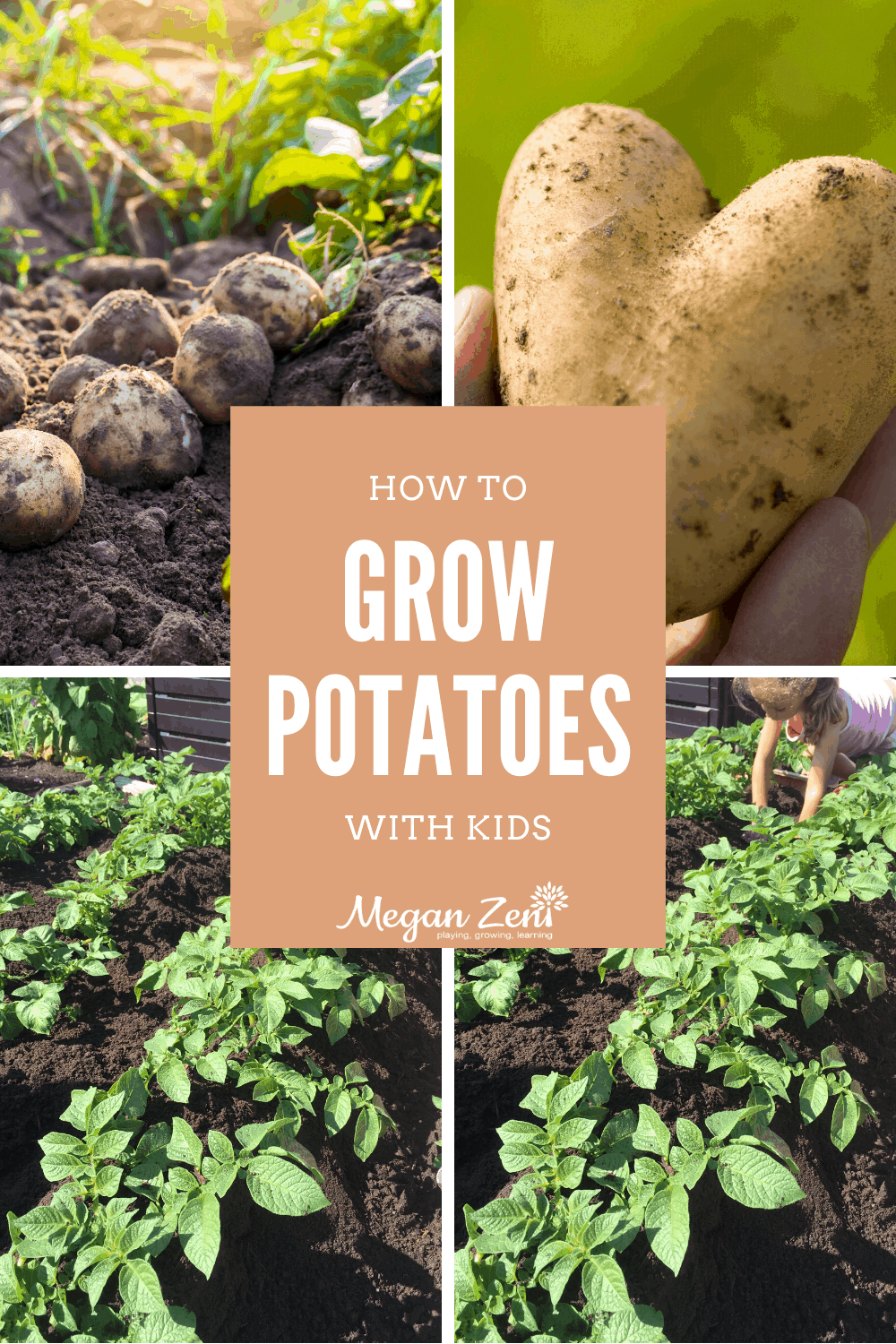
One of the most challenging aspects of growing food in school gardens is choosing crops that can reliably be harvested within the school year. Potatoes are a great school garden crop because they are familiar to kids, nutritious and tasty to cook up, plus they’re ridiculously joyful to harvest! This post is about how to grow potatoes with kids, in a school garden context.
Some advice might might be different from conventional potato gardening wisdom as we consider the school year calendar and classroom management strategies.
Planting potatoes with kids
Potatoes are considered an easy crop to grow, and require very little garden expertise to yield a wonderful harvest. They are not super fussy about the kind of soil they are planted in and, in fact, some gardeners argue that growing potatoes can improve your overall soil quality. That said, you will be more successful if you prepare the soil for success.
If you have access to compost or organic material, like leaves or straw, dig them in to the soil before planting for maximum yield. If you don’t have a patch of garden to plant in, potatoes can still easily be grown in sacks, tubs, or just about any large-ish container you can think of. Simply add purchased garden soil to your container.
For teachers in British Columbia don’t forget you can access resources, including printables and potato observation prompts, from BC Ag in the Classroom. You can learn more about Spuds in Tubs here.
Choosing potatoes to plant
Varieties of potatoes can be categorized as early, mid, or late season; which indicates when in the growing season you can expect to harvest your spuds. If you want to harvest your potatoes before the end of June, be sure to plant an early season potato, like the Yukon Gold. A mid season potato won’t help you in a school garden, unless we have a really cool summer.
So, if you think you want to leave them in over the summer, plant a late season potato, like the Russet.
Check with your local garden centre to see what varieties of seed potatoes they offer for sale, or you can save one from your pantry.
Chit the potato
To plant a potato from your pantry you’ll need to “chit” the potato which, if you don’t already keep your potatoes in the fridge, you’ll notice growing eventually on your potatoes anyway. A chitted potato has a small, dark growth coming from an eye of the potato, which is how the potato will grow from the seed potato.
Chitted potatoes look dried up and a bit soft, like something you might toss in your compost bin.
In the photo below, you can see the sprouts from the eyes of the potato are long and white, which simply means they’ve been in their dark seed bag too long.
It’s best to plant them when the sprouts are short and dark, but these will still grow. You just have to be extra careful with long sprouts like these if they’re all you’ve got, or go ahead and break off the really long sprouts, and leave the short ones to grow.
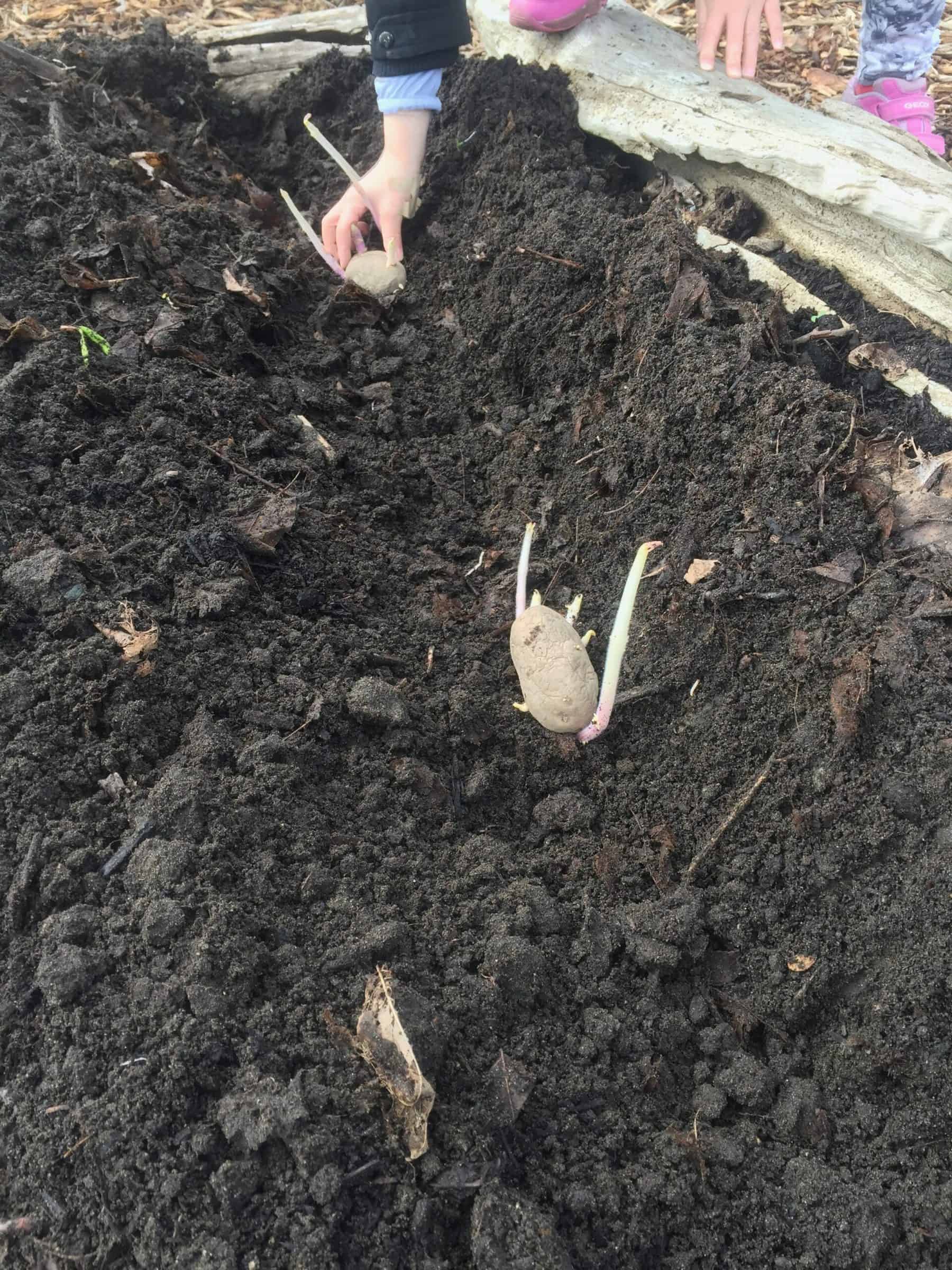
Planting potatoes with kids
Potatoes should be planted where they will receive full sun for at least 6 hours a day. It is generally a good idea to not water your potatoes until you see new growth emerging from the soil, this takes about 2 weeks. There really is not much to planting a potato. Simply place the potato in the soil with the chitted eye facing up.
We usually dig a bit of a trench so that we have soil set aside for hilling them up later.
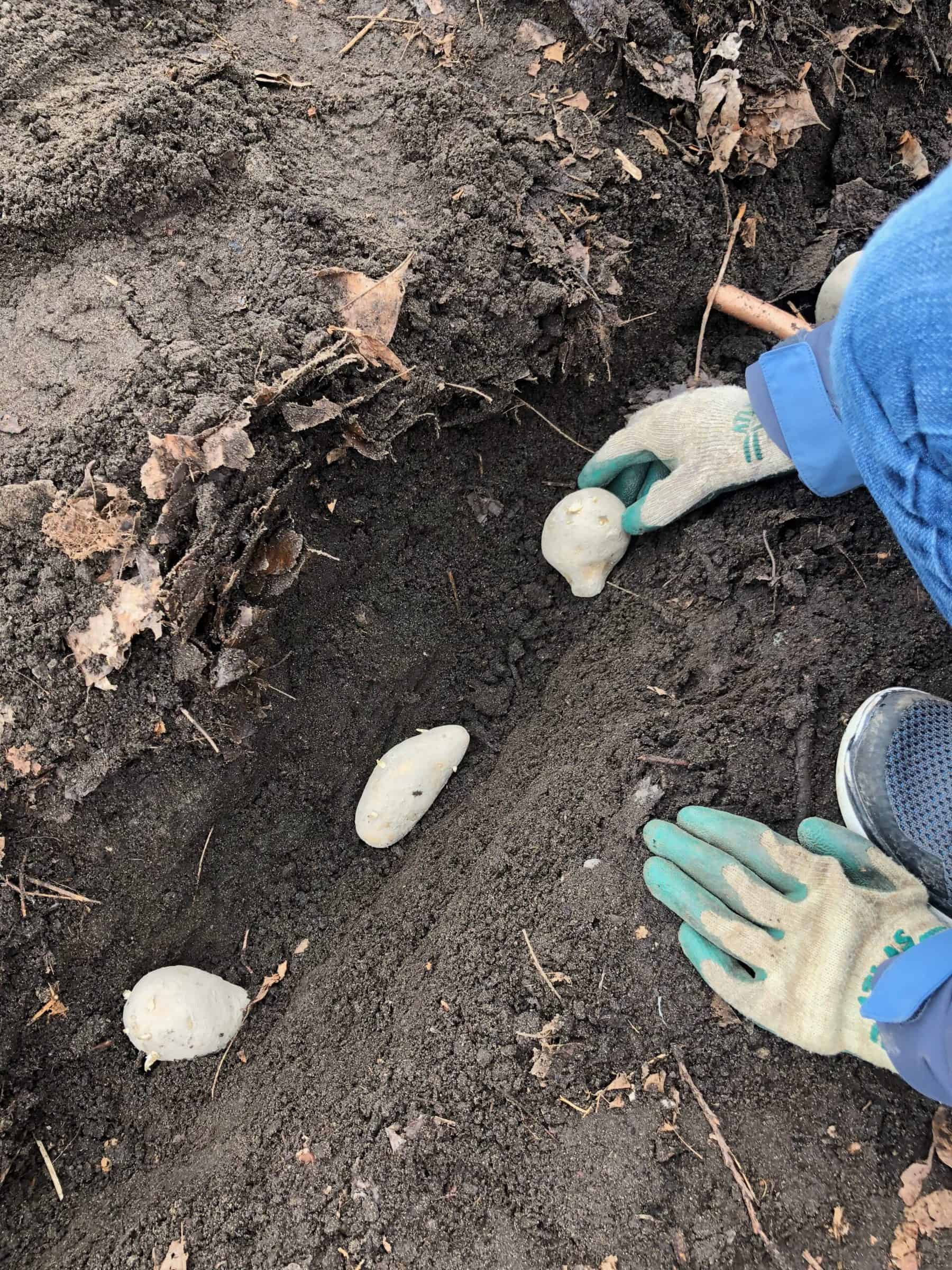
Caring for potatoes while they grow
Potatoes like to be hilled up as they grow. This simply means covering new growth with straw or soil as the plant grows taller. This allows more potatoes to grow as the stalk grows taller.
Keep a few leaves of the plant above the soil line so the plant can still receive energy from the sun! It is important to keep the soil moist so the plants have enough water to grow. If your plants begin to wilt, they need more water.

Potato pests
Potatoes can be particularly susceptible to the wire worm. This garden pest is commonly found in gardens that have been dug in areas where grass used to be, or near fields, which school gardens unfortunately often have.
There is not much to do about the wire worm, it is the larval stage of the click beetle and lives for 4 years as a seedling and root crop destroying larvae before growing up and moving on. My best advice for school gardeners is to test your soil with a bait potato before planting.
If your bait comes up clean, awesome! Go ahead and plant your crop of potatoes.
If it comes up looking like the potatoes in the photo below, then my best advice is to choose a different garden space, or grow the potatoes in containers. School gardeners are unlikely to win a fight with these pests.
To set bait potatoes, we use a bamboo skewer, or a chop stick, and place a bit of potato through the skewer. Leave the top bit of the skewer sticking out of the soil so you know where to find it.
Check the trap every few days. If you have a problem with wire worms, you’ll know. You can use this method anywhere in your garden, and if you have a mild problem with wireworms (they’ll also eat at the roots of tender seedlings, which can destroy them) you can eliminate most of them with this method early in the growing season, even if you are not growing potatoes.
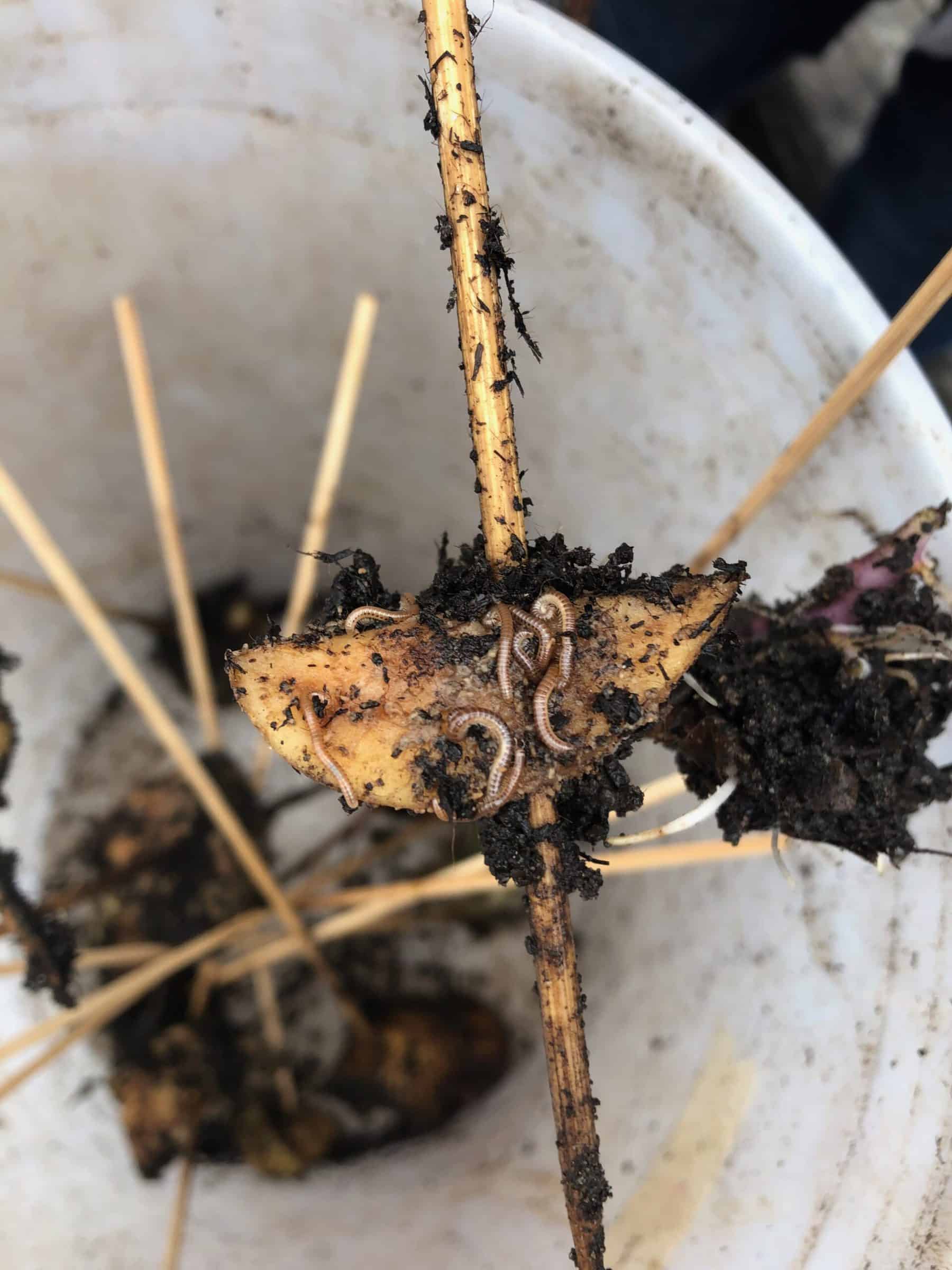
Harvesting potatoes
New potatoes are ready to harvest when the flowers arrive They have a very thin skin and must be harvested gently to not damage the tender spuds. If you leave your potatoes in the ground longer they will develop a thicker skin that makes them more suitable for storage.
You will know your potatoes are ready to harvest when the plants begin to wilt and look a bit yellow. This is usually 2 months after you have planted them, so if you want a harvest before the end of the school year, be sure to have them in the ground before the end of April!
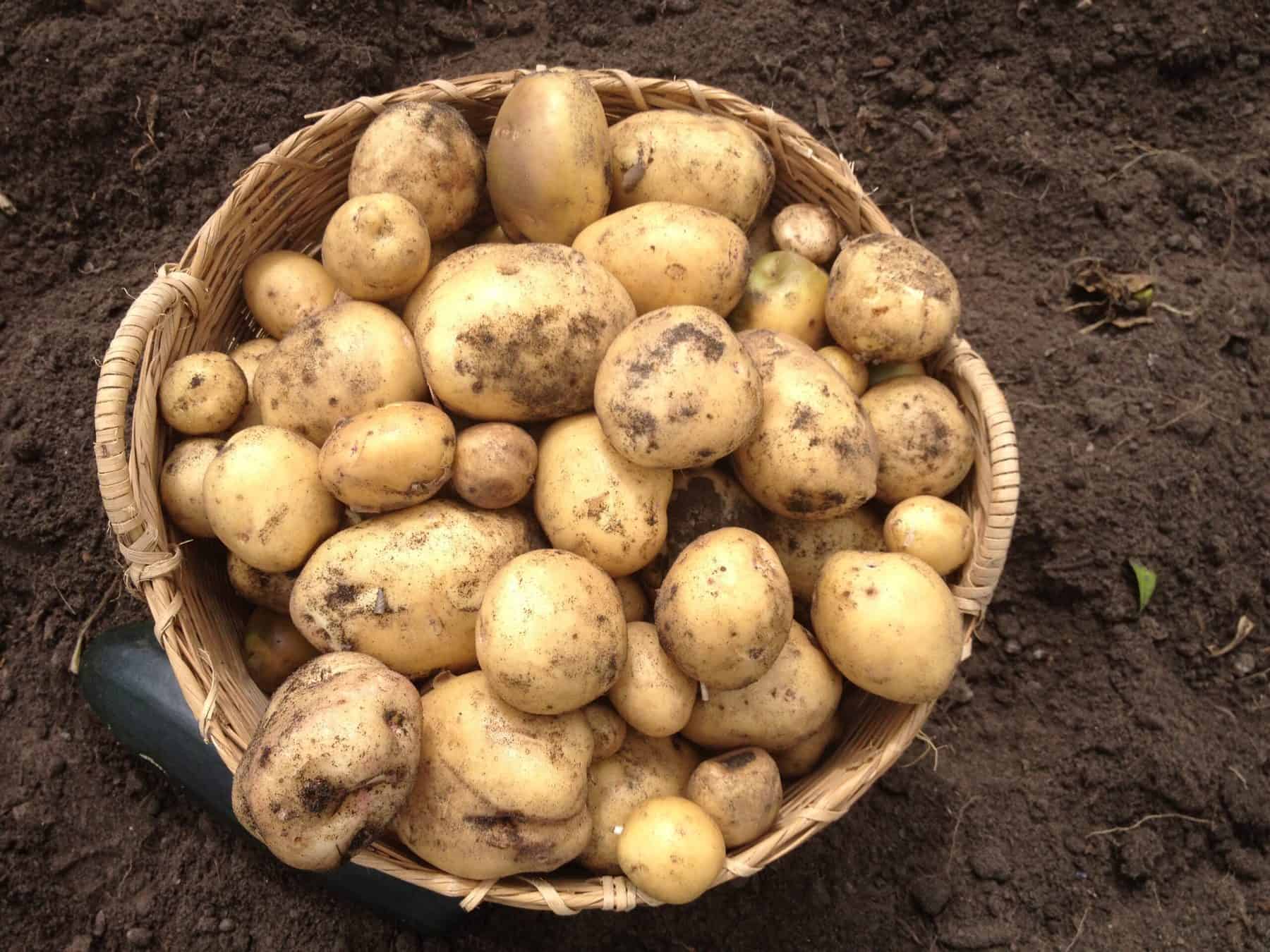
Harvesting potatoes is the best treasure hunt you will ever send your students on! There is an endless amount of joy in digging gently in the soil for potatoes, especially if you have planted varieties that grow really big!
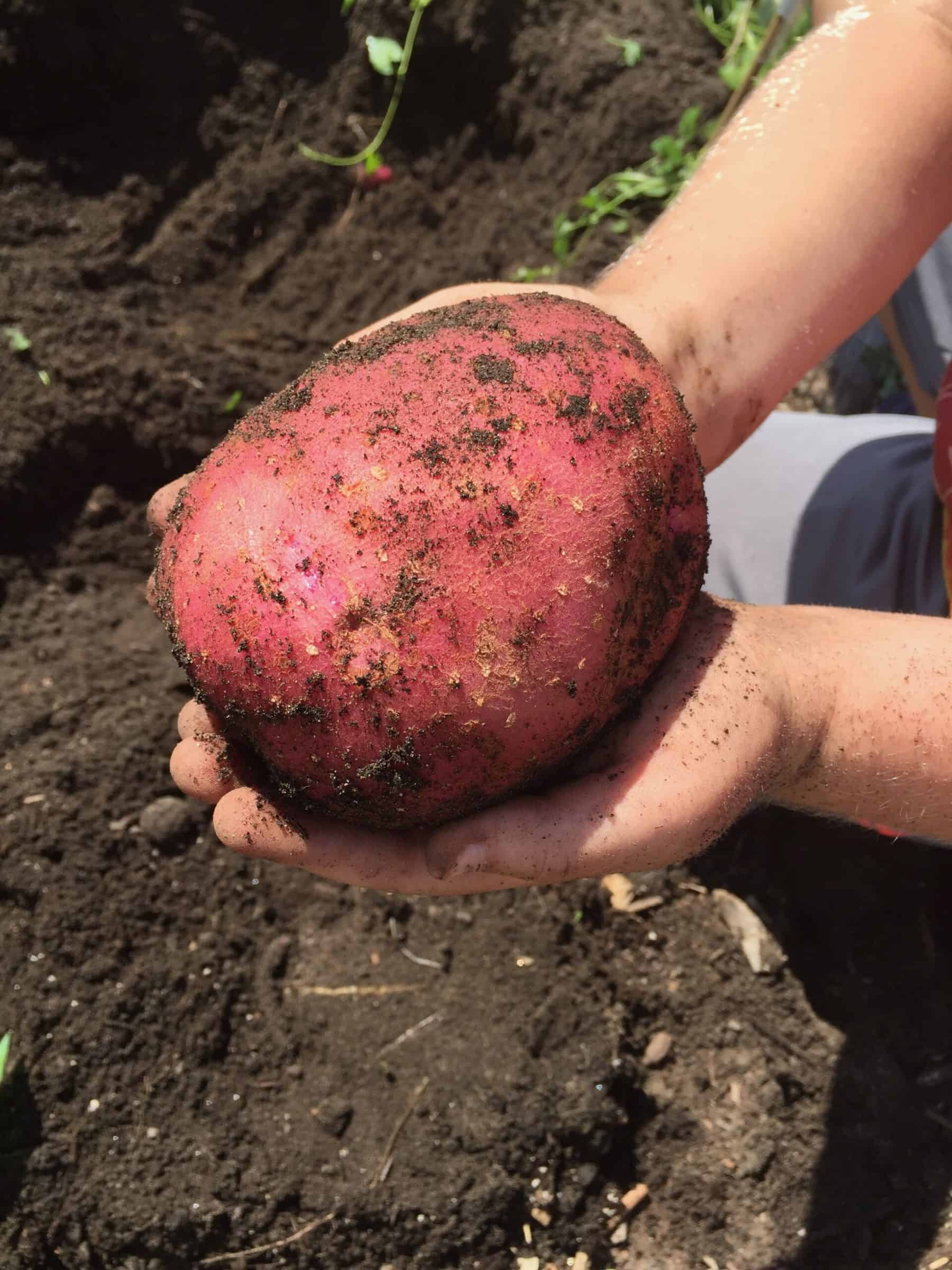
Learn more about gardening with kids
Here a few other posts you might find helpful for planting in school gardens with kids:
Related post: How to plant peas with kids
Related post: How to grow pumpkins with kids
Related post: How to grow kale with kids
Related post: How to grow rhubarb with kids
Related post: How to plant garlic with kids
Related post: How to plant carrots with kids
Related post: How to grow broad beans with kids
And here are more ideas curated from around the web on gardening with kids:
